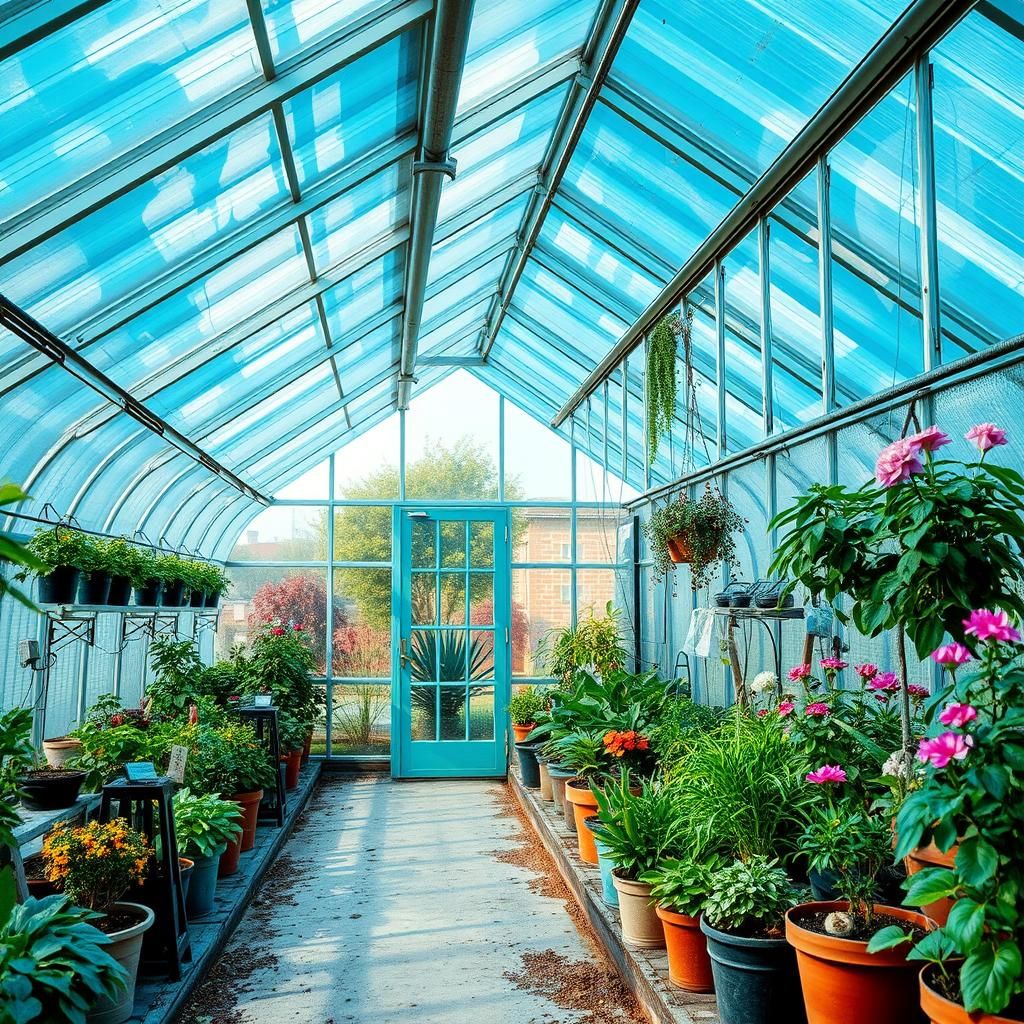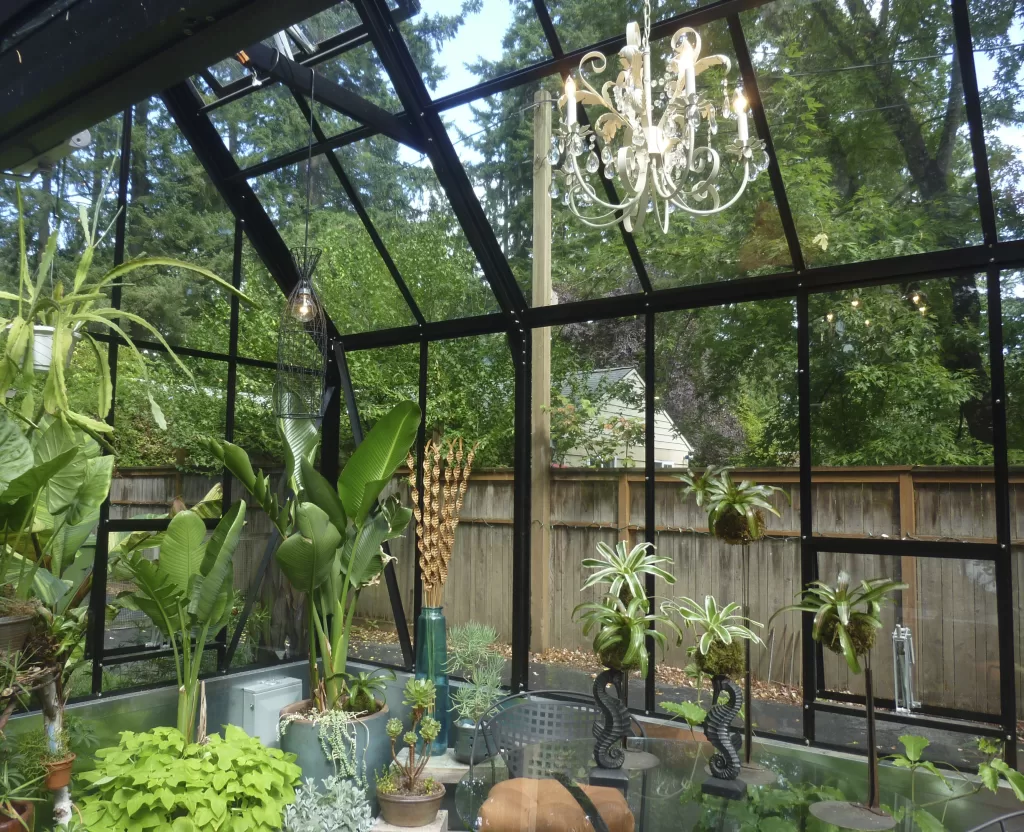Is it better to have glass or polycarbonate in a greenhouse? A Comprehensive Comparison for Gardeners

When it comes to building a greenhouse, one of the most critical decisions gardeners face is choosing the right glazing material. Glass and polycarbonate are two popular options, each with distinct advantages and disadvantages. Glass offers excellent light transmission and aesthetic appeal, but it can be heavy and prone to breakage. On the other hand, polycarbonate is lightweight, durable, and provides better insulation, making it an attractive alternative. This comprehensive comparison will explore the key features of glass and polycarbonate, helping gardeners make an informed choice that best suits their needs and gardening goals.
Glass vs. Polycarbonate: Which is the Better Choice for Your Greenhouse?
When deciding between glass and polycarbonate for your greenhouse, both materials have distinct advantages and disadvantages that can influence your choice. Glass provides excellent light transmission, creating a bright environment for plant growth, but it can be more fragile, vulnerable to breakage, and less efficient in terms of insulation. On the other hand, polycarbonate is known for its durability and insulating properties, making it a great choice for various climates, especially when temperature regulation is necessary. Ultimately, the best option will depend on your specific needs, including budget, climate conditions, and structural preferences for your greenhouse.
Light Transmission Efficiency
The efficiency of light transmission is crucial for plant growth, as most plants thrive in well-lit conditions. Glass has a light transmission rate of about 90%, allowing ample sunlight to penetrate. It is ideal for growing light-loving plants. Conversely, polycarbonate usually offers around 80-85% light transmission, which is still quite effective but slightly less than glass. However, some types of polycarbonate are designed with a special coating that can enhance light diffusion, which may ultimately benefit the growth of certain plants by reducing scorching.
Durability and Longevity
In terms of durability, polycarbonate is made from a strong plastic material known for its resistance to impacts, making it far less likely to break compared to glass. Polycarbonate panels can withstand hail, storms, and other harsh weather conditions. On the other hand, while glass is aesthetically pleasing and has a long lifespan when properly maintained, it can shatter easily, posing safety risks and requiring potential replacement, especially in areas prone to strong winds or heavy rainfall.
Insulation Properties
Insulation is a significant factor for maintaining a stable environment within a greenhouse. Polycarbonate is an inherently better insulator than glass due to its multi-wall design, providing added protection from temperature fluctuations. This property helps in maintaining optimal growing conditions, reducing heating costs in the winter and cooling costs in the summer. In contrast, the single layer of glass offers minimal thermal insulation, which may lead to heat loss and increased energy costs during extreme temperatures.
Cost Implications
The cost of building a greenhouse can vary significantly depending on the material used. Generally, glass panels tend to be more expensive initially, both in terms of material costs and installation due to their fragility. Polycarbonate, while initially less expensive, can provide significant savings over time with lower maintenance and replacement costs associated with durability. Additionally, the better insulation of polycarbonate can lead to long-term savings on energy bills.
Maintenance Requirements
When it comes to maintenance, both materials have different requirements. Glass greenhouses may require regular cleaning to maintain their light transmission efficiency, as dirt and grime can accumulate. Additionally, any broken glass panels can necessitate replacement, increasing ongoing maintenance efforts. Polycarbonate, while it may accumulate dirt, is typically easier to clean and does not require as frequent cleaning. Its resilience also means fewer repairs and less frequent replacement, making it a more convenient option for many greenhouse owners.
| Criteria | Glass | Polycarbonate |
|---|---|---|
| Light Transmission | 90% | 80-85% |
| Durability | Fragile | High Impact Resistance |
| Insulation | Poor | Excellent |
| Cost | Higher Initial Cost | Lower Initial Cost |
| Maintenance | More frequent maintenance | Less frequent maintenance |
Is polycarbonate or glass better for a greenhouse?

Polycarbonate and glass are both popular options for greenhouse construction, each having its unique advantages and disadvantages. When deciding which material is better for a greenhouse, several factors should be considered, including insulation, durability, weight, cost, and light transmission.
Durability
Polycarbonate is known for its high durability, making it a great choice for greenhouse use. Unlike glass, which can shatter easily under impact, polycarbonate is virtually unbreakable. This characteristic is especially advantageous in areas prone to severe weather conditions, such as hail or heavy winds. Here are some key points regarding the durability of both materials:
- Impact Resistance: Polycarbonate can withstand significant force without cracking, while glass can break easily.
- UV Resistance: Polycarbonate can be treated for UV protection, preventing degradation over time; glass also offers UV resistance but may not be able to match the longevity of treated polycarbonate.
- Longevity: While glass can last many years, polycarbonate’s resistance to impacts can extend its useful life in harsh environments.
Insulation Properties
When it comes to insulation, polycarbonate generally outperforms glass due to its multi-wall structure, which can trap air and reduce heat loss. This is crucial for maintaining a consistent temperature inside the greenhouse. Here’s how each material compares in terms of insulation:
- Multi-wall Design: Polycarbonate is often available in twin-wall or triple-wall configurations, enhancing its insulation capabilities compared to single-pane glass.
- Heat Retention: Polycarbonate can retain heat better, making it a good choice for cooler climates to promote plant growth.
- Energy Efficiency: The improved insulation of polycarbonate can lead to lower heating costs and better energy efficiency in the greenhouse.
Weight and Installation
The weight of the greenhouse material can greatly affect the overall structural design and ease of installation. Polycarbonate is significantly lighter than glass, making it easier to handle and install. Consider the following points:
See also:
- Lightweight Design: Polycarbonate panels are easier to lift and install, reducing labor costs and time.
- Structural Support: Due to its lightweight nature, polycarbonate requires less reinforcement than glass, which can be beneficial for DIY enthusiasts.
- Transport and Handling: The lightness of polycarbonate allows for easier transport to the installation site, reducing shipping risks and costs.
Cost Considerations
The cost of materials can significantly influence the decision between polycarbonate and glass. Generally, polycarbonate is cheaper than glass, both in terms of upfront material costs and installation. Here’s a closer look at the financial aspects:
- Initial Investment: Polycarbonate is often less expensive to purchase compared to glass panels.
- Long-term Savings: The durability and insulation properties of polycarbonate can lead to reduced energy costs over the lifetime of the greenhouse.
- Maintenance Costs: Polycarbonate may require less maintenance and fewer repairs than glass, translating to long-term savings.
Light Transmission
Light transmission is a crucial factor for plant growth in greenhouses. While glass allows for excellent light transmission, polycarbonate panels can also provide significant light while offering additional benefits. Here’s how they compare:
- Light Quality: Glass typically provides better light clarity, which is essential for photosynthesis in plants.
- Diffused Light: Some polycarbonate panels offer diffused light, which can help reduce hotspots and allow for better light distribution inside the greenhouse.
- Algae Growth Prevention: The UV blocking capabilities of polycarbonate can help inhibit algae growth compared to regular glass, keeping the greenhouse cleaner.
What is the best window for a greenhouse?

The best window for a greenhouse depends on several factors, including the type of plants being grown, the climate, and the specific needs for light and ventilation. Generally, clear polycarbonate panels and glass are considered the top choices for greenhouse windows.
Clear Polycarbonate Panels:
Clear polycarbonate panels are lightweight, durable, and provide excellent insulation compared to glass. They allow for up to 90% light transmission, which is ideal for plant growth.
- Advantages:
- Impact-resistant: Less likely to break compared to glass.
- Energy-efficient: Good insulation properties help maintain temperature.
- UV protection: Protects plants from harmful UV rays while allowing sunlight in.
Glass Windows:
Glass windows are a popular choice due to their aesthetic appeal and high light transmission (up to 90-95%). They allow maximum sunlight into the greenhouse, promoting healthy plant growth.
- Advantages:
- Clarity: Glass provides clear visibility and aesthetic appeal.
- Durability: Long-lasting and resistant to scratches.
- Compatibility: Easily integrated with various greenhouse designs.
Ventilation Windows:
Ventilation is crucial in a greenhouse to regulate temperature and humidity. Windows designed specifically for ventilation purposes can open and close automatically or manually.
- Advantages:
- Temperature control: Helps prevent overheating during hot weather.
- Humidity regulation: Maintains optimal moisture levels for plants.
- Air circulation: Improves overall air quality for plant health.
Double-Pane Glass:
Double-pane glass windows provide additional insulation compared to single-pane glass. They are particularly beneficial in regions with extreme temperatures.
- Advantages:
See also:
- Insulation: Reduces heat loss during winter months.
- Soundproofing: Minimizes external noise interference.
- Condensation reduction: Minimizes moisture build-up between panes.
Frame Materials for Greenhouse Windows:
The frame material is also important when choosing windows for a greenhouse. Common materials include wood, aluminum, and vinyl.
- Advantages:
- Wood: Offers a natural look and good insulation properties.
- Aluminum: Lightweight, strong, and resistant to rust, making it durable.
- Vinyl: Provides excellent insulation, requires little maintenance, and is cost-effective.
Should I use glass or plastic for my greenhouse?

1. Durability and Longevity
Using glass for a greenhouse offers superior durability compared to plastic. Glass greenhouses can last for many years, often exceeding 25 years with proper maintenance. In contrast, plastic materials, particularly polycarbonate or polyethylene, may last around 10-15 years before they need replacement. Factors affecting durability include:
- Weather Resistance: Glass can withstand extreme weather conditions better than plastic.
- UV Exposure: Many plastics degrade over time when exposed to UV radiation, whereas glass does not.
- Impact Resistance: Some types of glass are tempered to resist breakage, while plastic can become brittle.
2. Insulation Properties
The insulation properties of your greenhouse can greatly affect plant growth and energy efficiency. Glass has excellent insulation qualities which help maintain consistent temperatures:
- Heat Retention: Glass structures retain heat well during colder months.
- Condensation Management: Glass minimizes condensation build-up, which can foster plant diseases.
- Light Transmission: Glass allows for better light transmission compared to most plastics, promoting optimal growth.
3. Cost and Initial Investment
When considering your budget, the initial investment is a significant factor. Glass greenhouses tend to be more expensive due to the cost of materials and installation:
- Material Costs: Glass is typically pricier than plastic sheets or panels.
- Installation Labor: The installation process for glass is often more labor-intensive and thus costs more.
- Long-term Savings: While upfront costs are higher, the longevity of glass can lead to savings over time.
4. Maintenance Requirements
When it comes to maintenance, both materials require different levels of care. Understanding these needs is essential for long-term success:
- Cleaning Needs: Glass generally requires more frequent cleaning to maintain transparency.
- Repair Challenges: While glass can be repaired, replacing broken panels can be more complex and costly.
- Plastic Aging: Plastic may need to be replaced more often due to wear and tear or discoloration.
5. Environmental Considerations
Lastly, it is crucial to consider the environmental impact of your choice. Both materials have their pros and cons in this regard:
- Recyclability: Glass is completely recyclable and can be reused multiple times without degradation.
- Manufacturing Impact: Plastic production involves fossil fuels, contributing to environmental degradation.
- Energy Efficiency: Glass can lead to higher energy efficiency in the long run, impacting your carbon footprint.
Questions from Our Readers
What are the advantages of using glass in a greenhouse?
Using glass in a greenhouse provides excellent light transmission, allowing more sunlight to reach the plants. Additionally, glass is often more durable than other materials, resistant to UV rays, and can last for many years without significant degradation.
What are the benefits of polycarbonate for greenhouses?
Polycarbonate is lightweight and offers superior insulation compared to glass, which helps maintain a more stable temperature inside the greenhouse. It is also impact-resistant, making it less likely to shatter, and generally offers better UV protection than glass.
Which material is more cost-effective for greenhouse construction?
In general, polycarbonate is often considered more cost-effective than glass, especially in terms of initial investment and long-term maintenance. While glass may require more substantial framing and support due to its weight, polycarbonate allows for a simpler, less expensive construction process.
How does the choice between glass and polycarbonate affect plant growth?
The choice between glass and polycarbonate can significantly influence plant growth by impacting light levels and temperature regulation. Glass allows for greater light penetration, while polycarbonate provides better temperature control, which can lead to healthier, more robust plants depending on the specific needs of your greenhouse crops.
See also:

If you want to read more articles like Is it better to have glass or polycarbonate in a greenhouse? A Comprehensive Comparison for Gardeners, we recommend you check out our Greenhouse category.
Leave a Reply
Related Articles